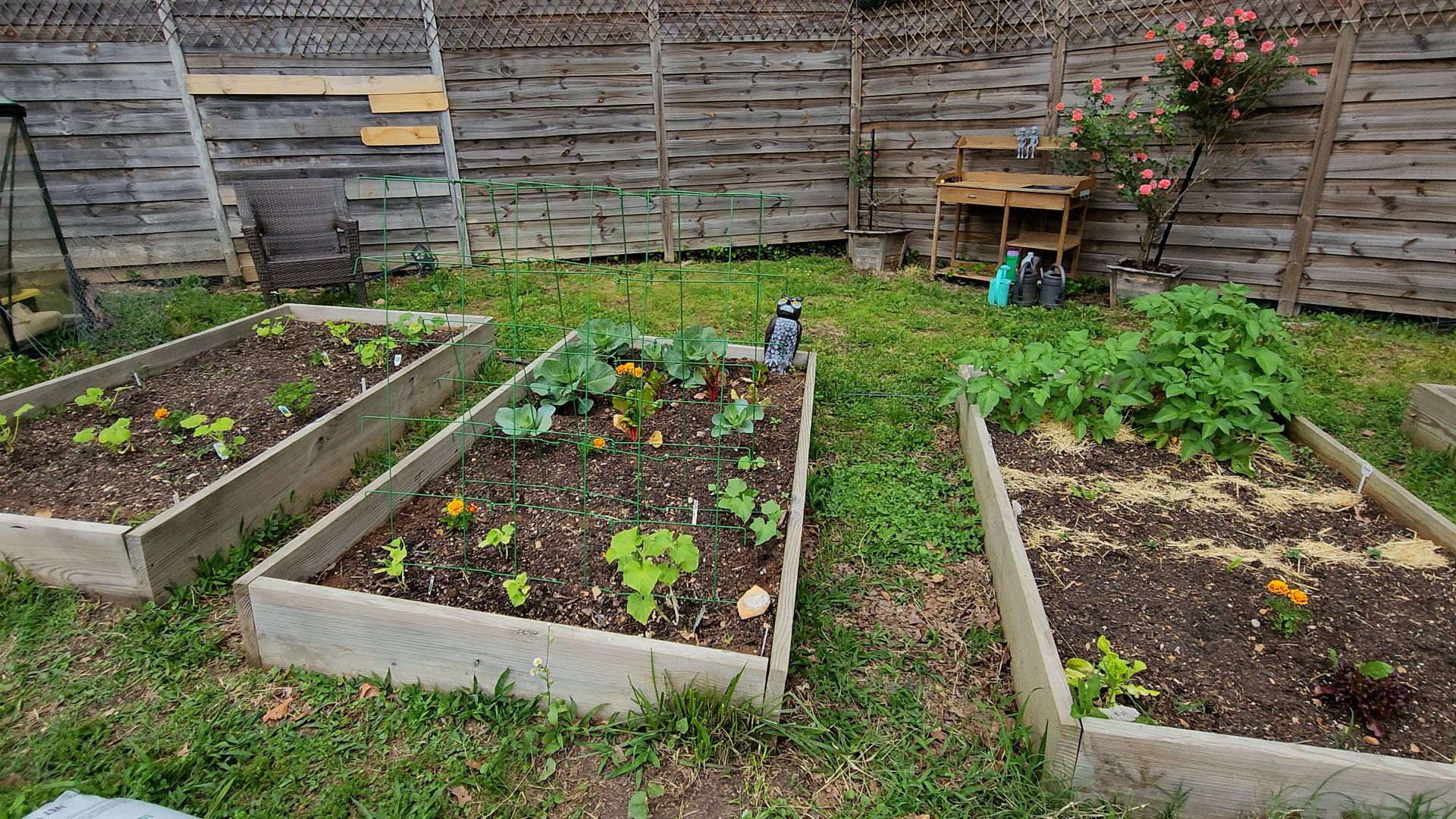Growing Made Simple: The Intermediate Guide to Raised Bed Gardening
Complete control over your growing environment with less work
Raised bed gardening gives you complete control over your growing environment with significantly less work than traditional gardening. By elevating soil 6-24 inches above ground level in framed structures, you'll enjoy better drainage, higher yields (30-50% more per square foot), and reduced maintenance—all while avoiding the backbreaking work of traditional gardening. This method works everywhere from suburban yards to urban patios, making it perfect for beginners looking for immediate success without years of soil improvement or fighting against less-than-ideal growing conditions.
Why Raised Beds Make Gardening Easier
Key Benefits
- Better drainage and soil quality
- Higher yields (30-50% more per square foot)
- Fewer weeds and pests
- Less bending and physical strain
- Works in almost any location with sufficient sunlight

Raised bed gardens create an optimal growing environment that's separate from existing ground conditions. The enclosed, elevated design provides excellent drainage while allowing you to start with perfect soil regardless of what's underneath. This controlled environment means fewer weeds, less bending, and more efficient use of space.
The defined structure of raised beds naturally encourages organization and makes planning simpler. Even in winter or early stages, raised beds provide a neat, intentional look to your garden—more satisfying than the sometimes chaotic appearance of traditional plots.
For those with physical limitations, raised beds at appropriate heights (24-36 inches) can eliminate bending entirely, making gardening accessible to more people. The ability to place beds almost anywhere with sufficient sunlight—patios, driveways, or rooftops—brings gardening possibilities to those without traditional yard space.